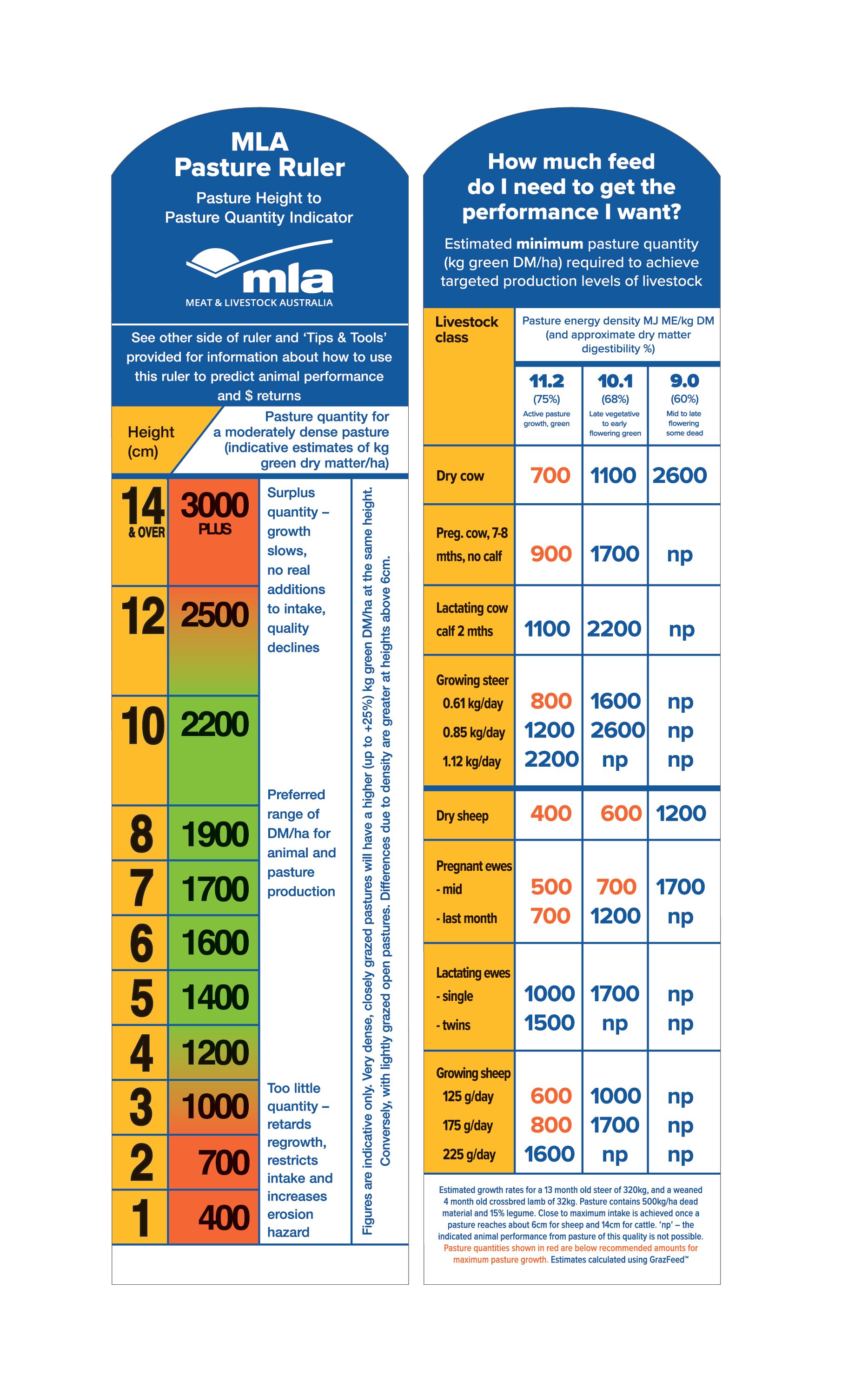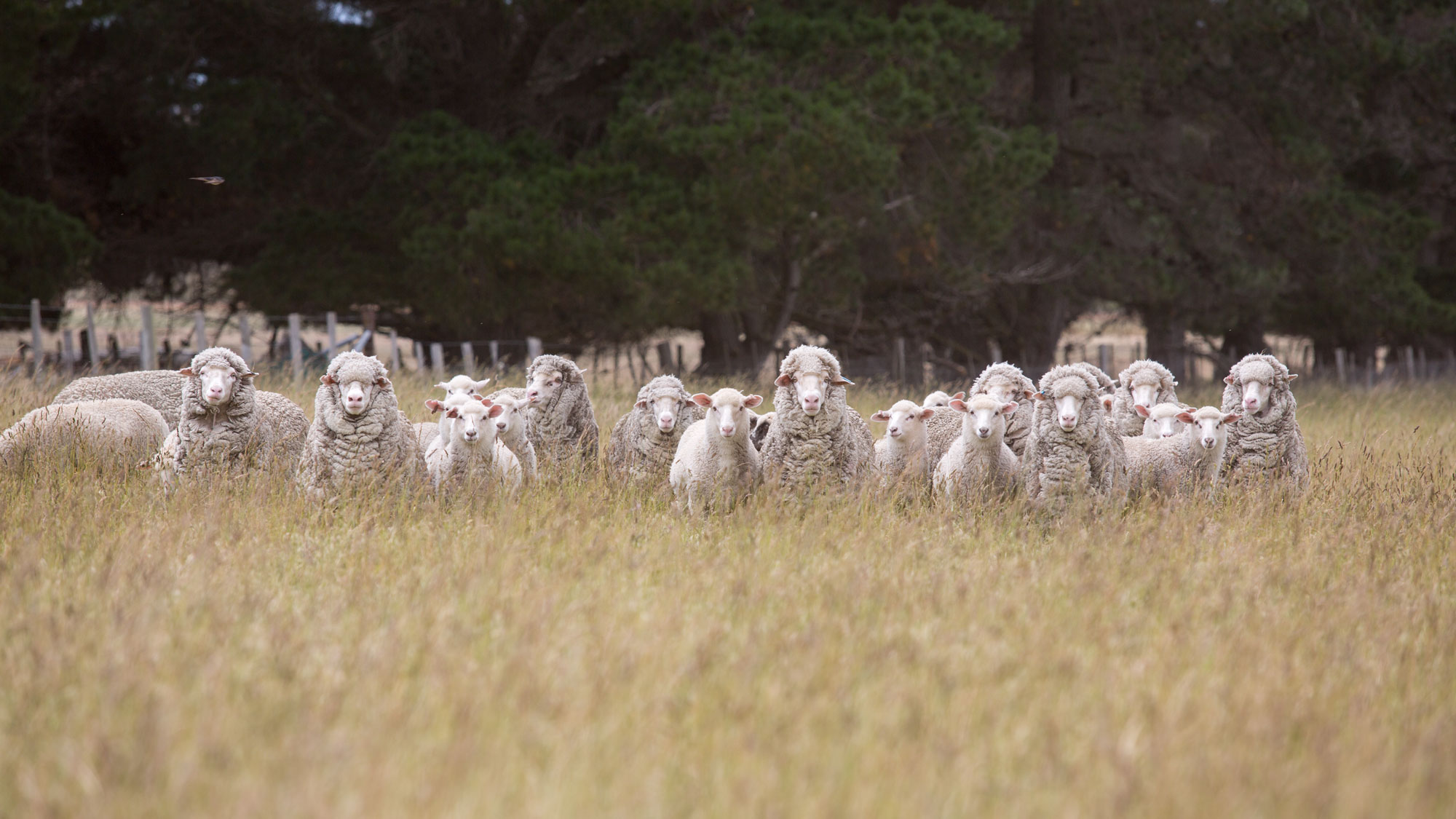Tool 8.5 Pasture rulers, sticks and meters
A number of paddock aids are available to help assess pasture mass (quantity) ranging from the MLA Pasture Ruler to commercially available pasture meters. They include:
- Pasture rulers or sticks that measure height and equate to pasture mass — calibrated to read green dry matter when 100% green and capable of conversion to dry matter. These aids are simple to use and a cheap method. Pasture benchmarks are marked on the ruler to allow a quick assessment of whether prevailing pasture conditions (quality and quantity) are meeting the needs of the livestock (see image at left). These tools are not suitable for annual pastures that are tightly grazed or have variable compositions. To request an MLA Pasture Ruler phone 1800 675 717.
- Read MLA Tips & Tools fact sheet Improving pasture use with the MLA pasture ruler.
- Use the AWI Feed on Offer Library pasture photo standards for these pasture types to help estimate feed on offer and quality. A hardcopy booklet is also available.
- Rising plate meters measure total pasture mass (green and dry standing feed) and are based on a plate that rises up a probe depending on the amount of compressed pasture material between the plate and ground. Pasture cuts need to be taken to calibrate the meter. They are available from a number of commercial outlets, and price generally depends on the degree of automation of collection. Rising plate meters are generally cheaper than electronic probes and may be preferable when frequent automated assessment of pastures with significant levels of dry pasture is needed. Rising plate meters are generally cheaper than electronic probes and may be preferable when frequent automated assessment of pastures with significant levels of dry pasture is needed.
- Electronic probes measure dry matter of green material only. They are quick, easy to use and usually fully automated. Some also allow collection of user-defined and read assessments such as groundcover and the plant shape (flat, upright, etc.). Their accuracy declines if there is any free moisture present in the pasture, e.g., after rain or heavy dews.






